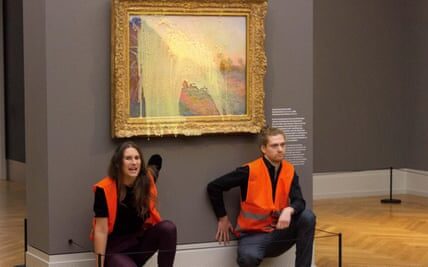Review of “A Day in the Life of Abed Salama” by Nathan Thrall: An Intimate Encounter of Conflicting Worlds.

T
The ongoing violence between Israelis and Palestinians has escalated to a disturbing level. Despite the unexpected attack by Hamas on October 7th, which resulted in the deaths of over 1,400 Israeli civilians and the capture of nearly 200 hostages, and the expected retaliatory actions by Israel, there is a challenge faced by those writing about this topic. The core conflict seems to be at a standstill, making it difficult to create a book that does not simply rehash previous reports and avoid sounding repetitive.
Nathan Thrall, a previous member of the International Crisis Group, has discovered a solution. Despite his impressive background, he has not produced an evaluation or policy paper, nor a 10-point proposal for peace. Instead, he has created a captivating piece of non-fiction, a book that evokes strong emotions and, in its final chapters, builds suspense like a thriller.
Using the accounts of all parties involved, even indirectly, a single episode is able to provide a thorough and precise depiction of that specific event and also sheds light on the realities of daily life in the occupied territories.
The event being discussed was not an act of terrorism by Palestinians, an attack by Israelis, or a violent confrontation between the two groups. Rather, it was a car accident on a wet day in February 2012: a crash on a highway in the West Bank involving a truck and a bus carrying a group of enthusiastic five-year-old Palestinian students on a school trip. This resulted in the deaths of seven individuals, including one teacher and six children.
The chosen topic may come as a surprise, but it is a clever one that challenges the reader’s preconceived notions. If the book had focused on a bombing or battle, the reader would have been quick to determine the villain’s identity from the beginning. However, Thrall chooses to tell a more nuanced story. He delves deep into the lives of those affected on that fateful morning, starting with Abed Salama, whose son Milad was on the bus. The book dedicates numerous pages to the captivating story of the secret love between Abed and his childhood sweetheart, who belonged to a rival family. This love was tragically thwarted in a cruel manner that could have been straight out of a Shakespearean play. This style of storytelling is a bold move, as it humanizes individuals who are often only discussed as part of a larger group, especially during times of violence like now, when they are reduced solely to their identity as “Palestinians.”
The author, Thrall, provides background information on the drivers involved in the collision, the first medic on the scene, and the creator of Israel’s “separation barrier”. We also learn about the architect’s family history, which was greatly affected by the Holocaust. As the story unfolds, we see the characters become more complex. Through this process, we are given a closer look at the mechanics of occupation, such as the transformation of a natural Palestinian pool into an Israeli nature reserve that charges admission to Palestinians but not to Israeli settlers. We also witness the mistreatment of Palestinian prisoners in Israeli jails and the difficult bureaucratic processes that Palestinians must navigate in order to live.
Not that Palestinians themselves escape Thrall’s scrutiny. We encounter informants and collaborators; we learn that Abed has to travel to the mosques of East Jerusalem if he is to hear a sermon unneutered by the censors of the sulta, the Palestinian Authority; we see that, when it comes to marriage and the family, Palestinian women live under traditional expectations, and rules, that are repressive if not crushingly misogynistic.
However, Thrall’s storytelling ultimately leads to a single outcome. He reveals that the fatal incident was not solely caused by severe weather and the truck driver’s careless actions. Instead, he highlights “the real root causes of the disaster”. These include the separation barrier and permit system, which forced a kindergarten class to take a hazardous detour to the outskirts of Ramallah, as well as checkpoints that restricted Palestinian movement and prioritized settler traffic during rush hour. Additionally, the lack of emergency services on one side of the separation barrier was a significant contributing factor to the tragedy. It was inevitable that these factors would result in a devastating outcome.
The cause, simply put, is the ongoing occupation, a political endeavor that has been in place for 56 years and is causing great harm to humanity. While this is not new information, Thrall’s accomplishment is to help us truly understand and empathize with the injustice it brings.
Skip over the advertisement for the newsletter.
after newsletter promotion
Source: theguardian.com

